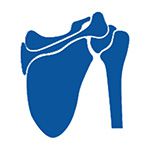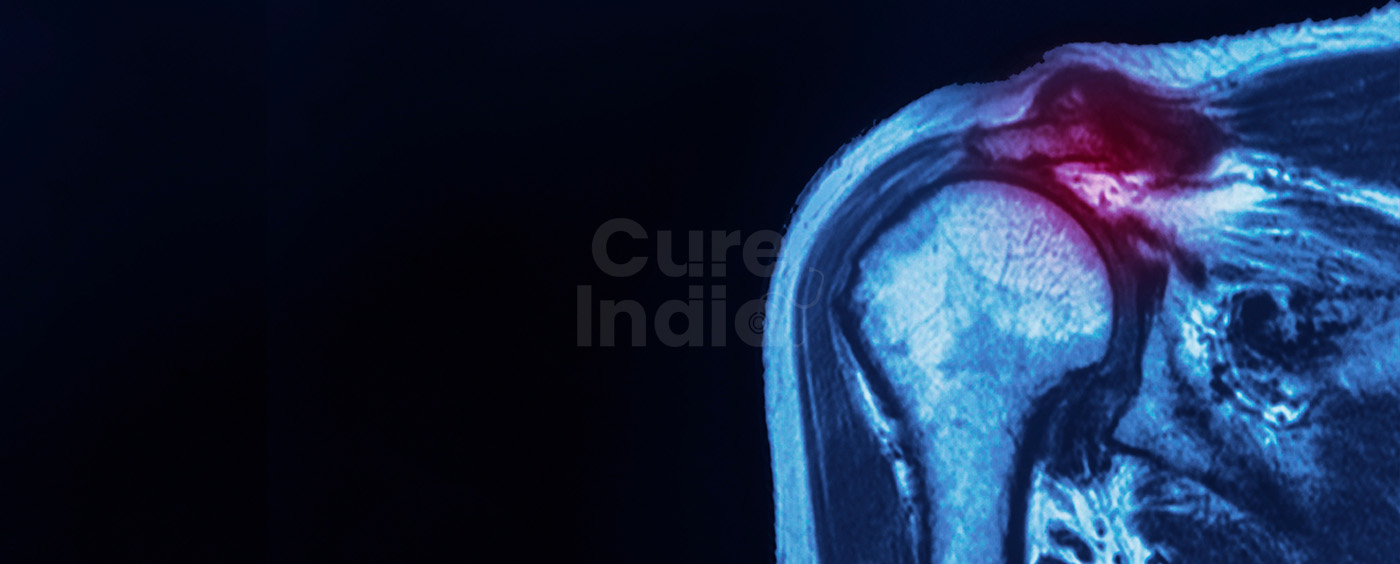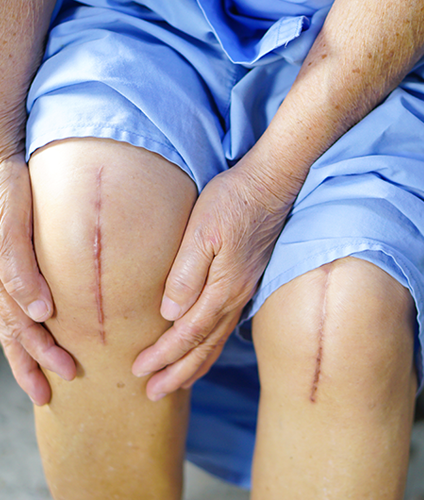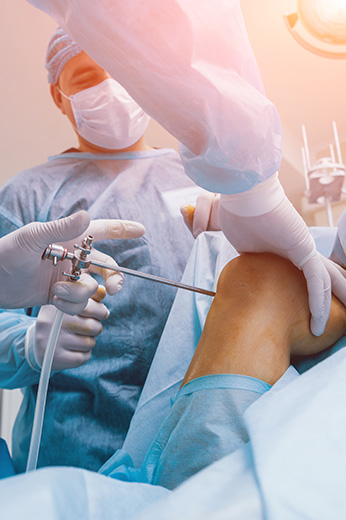

There are more reasons than just the socio-economic aspects that push Africans towards medical care in other countries. The appeal of specialised skills and high-end technologies might not be available at affordable prices in many African countries like Congo, Ethiopia, Tanzania, Ghana, etc. Thus, travelling abroad is enticing for many patients facing complex medical conditions, such as rotator cuff injuries. India is a country where highly qualified doctors deliver world-class treatments; this has led to the rise of medical tourism in India for various reasons, including the presence of internationally accredited hospitals and internationally-trained doctors.
Also, being staffed with English-speaking medical staff who facilitate patient visa procedures further solidifies its standing among international patients seeking holistic treatment experiences, postoperative care, and rehabilitation— all under one roof. For those considering arthroscopic rotator cuff repair surgery, India offers the most comprehensive approach for a successful recovery with ease, which paves the way for quality treatment without any hindrances later down their journey back to health.
The rich cultural history and gracious Indian welcome extended to patients worldwide form part of the positive ambience of seeking medical treatments within India. The country's ancient heritage coalesces harmoniously with up-to-date technologies and infrastructure, an environment where healing and rejuvenation are at home.
The blend of cost-effectiveness, proficiency, and care filled with empathy makes India a preferred choice for African patients looking for medical help— especially in procedures like arthroscopic rotator cuff repair.
The muscles that encompass the shoulder joint are known as the rotator cuff. Providing the force to raise and rotate the arm is their responsibility. These muscles thinning with age make them more vulnerable to rupture, sometimes with little force. Rupture is typically linked to severe trauma in younger patients. The area where the tendon and muscle meet, or the muscle inserts into the bone, is where the rotator cuff tears most frequently.
However, the Rotator Cuff muscles do not mend independently when they rip entirely. If you leave them alone, the rip may get bigger and cause you to lose strength and mobility over time. A major tear grows larger, and one loses movement and power the longer it is left unattended. A smaller rip is likely to have a better surgical outcome than a larger tear, therefore the longer the tear is left untreated, the less likely it is to have an acceptable outcome.
Patients usually experience excruciating pain when their arm is elevated, discomfort at sleep, and limitations in their range of motion and strength. They might eventually lose most of their shoulder range of motion.
Your doctor might suggest an arthroscopic rotator cuff repair surgery to repair a torn rotator cuff. An arthroscope, a tiny camera, is inserted into your shoulder joint by the surgeon during an arthroscopic rotator cuff surgery. Your surgeon uses the images from the camera to guide tiny surgical instruments on a television screen.
Repairing a torn rotator cuff using an arthroscopic operation is the least intrusive option available. It is often done as an outpatient treatment.
The humeral head, also known as the "ball" at the top of the arm bone or humerus, may not stay centred on the glenoid, also known as the "socket" linked to the shoulder blade, when the rotator cuff is weak, frayed, or torn. This can lead to "impingement" of the cuff's surfaces on the surrounding bony arch, causing aberrant motion at the joint. The spectrum of cuff problems ranges from mild to severe, and they are diverse in nature:
■ Tendonitis: The inflammation of the cuff tissue, known as tendonitis, is typically moderate and responds to treatment.
■ Tendinosis: Degenerative or weakening of good cuff tissue is known as tendinosis, caused by recurrent injuries to the cuff with inadequate recovery.
■ Partial-thickness or incomplete tears: Partial-thickness or incomplete tears can also happen, but this issue usually goes away with proper rehabilitation. Even though small tears might become full, the process can often be stopped by rehabilitation, which strengthens the tissue that is still intact in the cuff. Many people with partial-thickness rips won't ever need surgery if they receive the right physical therapy rehabilitation to correct any abnormalities in their muscle.
■ Full-thickness tears: Full-thickness tears result when a section of the rotator cuff tendon fully separates from the bone insertion. Surgeons categorise these as follows: small (having only one tendon involved and little retraction from the insertion); medium (involving one or two tendons with minimal retraction); large (involving a significant portion of one or both tendons and requiring extensive mobilisation or repair to be fixed); or massive (tears involving at least two tendons that will require extensive débridement, mobilisation, and reconstruction). Physical therapy can occasionally help people with tiny or even medium-sized tears return to regular functions. Large, major tears are unlikely to heal with therapy, and in rare instances, postponing surgery might cause atrophy or the wasting away of muscles and tissues, making future healing difficult or impossible.
Rotator cuff tears often arise as an "innocent bystander" to more symptomatic issues like arthritis or shoulder instability. They can also occur in conjunction with other shoulder ailments. To ensure that no additional issues are present or have contributed to the shoulder pain or rotator cuff rupture, it is crucial that a shoulder specialist undertake a thorough examination of the shoulder and neck.
Shoulder injuries are commonplace. Rotator cuff injuries can be common among athletes and those involved in manual labour due to the repetitive movements that often lead to a strain on the shoulder. Apart from overuse, the rotator cuff may also be injured from a sudden fall or impact trauma at the shoulder region— damage can occur gradually over time. The types of damage could include strains or tears within the rotator cuff, bursitis (inflammation of the bursa in the shoulder), or tendinitis (inflammation of the tendons in the shoulder). Recurrent pain, limited range of motion with arm movement, and muscle weakness are typical symptoms.
When conservative medical treatments fail to address these symptoms effectively, one option that might help is rotator cuff repair surgery; other medical treatments for a rotator cuff injury may involve:
Arthroscopic rotator cuff repair may be performed using an arthroscope. An arthroscope is a small tubular instrument consisting of an optical system (lenses), a video camera, and a light source inserted into a joint space to visualise it. The camera is connected to a monitor that allows the surgeon to see the inside of a joint through tiny openings. The arthroscope is usually used with other instruments inserted through separate small incisions.
An alternative procedure to this is an open repair for rotator cuff injury that is irreparable through arthroscopy; occasionally, a tendon graft or joint replacement might also be considered.
There may be other factors that your specialist has to consider when determining whether you need an arthroscopic rotator cuff repair.
An arthroscopic rotator cuff repair surgery does not involve large incisions and open exposure. What is typically performed arthroscopically is the use of a shoulder arthroscope. This involves making small incisions in the shoulder and then inserting an arthroscope — a small tube with a camera attached — through these openings to the location of the tear. With this view, we can utilise specially designed instruments to repair the rotator cuff without causing significant damage to surrounding muscles and tissues.
Patients are put through this procedure using a nerve block for anaesthesia (regional) along with only partial sedation instead of general anaesthesia. This approach decreases the amount of pain medication as well as anesthesia drugs administered during the surgery leading to fewer postoperative side effects such as nausea and vomiting. These advancements in minimally invasive procedures and improved anaesthesia techniques have allowed most patients to be discharged home within a few hours after their surgery— minimising their hospital stay period.
Initially, a glenohumeral joint arthroscopy is carried out (which represents the ball-and-socket part of the shoulder joint) to detect and address additional issues like biceps tendon injury, loose bodies or torn labrum. (The shoulder labrum is the cartilage rim surrounding the glenoid cavity.) It is possible that a partial rotator cuff tear (less than 50% of its thickness) will be addressed by trimming it with a shaver during this procedure.
First, the arthroscope is introduced into the subacromial space under the acromion— an osseous part situated at the apex of the scapula. It is through this space that the rotator cuff tendon traverses. An opening up of the subacromial space is known as a subacromial decompression. This surgery, identified as an acromioplasty, entails the excision of a bone spur and any irregularities present on the undersurface of the acromion; these irregularities can act as an impingement on the rotator cuff, leading to its irritation and tearing. The torn tendon is subsequently fixed back to its bony attachment point using suture anchors and sutures, facilitating the re-establishment of integrity within the musculotendinous unit.
After you undergo a surgical operation, pain is something that will come to you. This is part of the normal healing process; however, your doctor and nurses will try to alleviate this pain.
Medications are commonly prescribed for short-term pain relief post-surgery. There are many different kinds of medicines available to help control pain; these include opioids, NSAIDs, and local anaesthetics. Your doctor might choose a mixture of these medications. This would improve the pain relief quality and also reduce the necessity for opioids.
Although opioids do assist in relieving postsurgical pain, they are narcotics— and narcotics are known to be addictive. Opioid dependency and overdose have emerged as grave issues within public health circles. It is thus crucial that you only use opioids as per your doctor’s instructions and cease their consumption upon initiation of pain alleviation. Should you not notice any positive changes with regard to your pain within a few weeks after surgery, make sure to get in touch with your doctor.
Returning to your daily activities is an important part of rehabilitation. Specifically, a physical therapy program can help restore strength and motion in your shoulder.
Therapy progresses in stages after surgery, with immobilization being the first stage. During this period, the repair must be protected while the tendon heals. You will use a sling to keep your arm from moving and avoid using it for the initial 4 to 6 weeks— the duration of sling usage depends on how severe your injury is.
Active exercise during rehab could involve isometric external rotation drills. Passive regimen persists post-repair. Despite the mending of your tear, the muscle surrounding your arm lingers weak, awaiting the nod from your surgeon to stir your arm and shoulder safely into motion. Their primary aim is to restore the range of motion in your shoulder. During these sessions, your therapist cradles your arm and moves it through various positions. This is usually initiated within 4 to 6 weeks post-operation.
4 to 6 weeks post-surgery, you'll transition to performing active exercises autonomously, freeing yourself from the aid of your therapist. Consciously moving your muscles initiates a development phase; progressively elevating your strength and fine-tuning command over your arm. At the onset of the 8th to the 12th-week post-surgery, your therapist will orchestrate a program designed around strengthening exercises.
It will be months before you can recover, which is a slow process. However, most patients are able to attain a functional range of motion and adequate strength in their arms by the fourth to sixth month post-surgery. Despite its languid pace, rehabilitation is interestingly not only an involvement but also a commitment on your part, which is key towards ensuring a successful outcome for this endeavour.
In India, rotator cuff repair cost in India starts at $3,0000. The price of rotator cuff repair often varies depending on a number of criteria across different hospitals and clinics.
Factors to be considered while estimating the rotator cuff repair cost in India include:
■ Hospital and City Selection: The charges for the surgery vary slightly based on location. Similarly, the cost of hospitalisation is also influenced by the city where it takes place. Medical care costs are generally higher in metropolitan cities such as Kolkata and Mumbai than in non-metro areas like Darjeeling and Goa.
■ Injuries type and severity: Rotator cuff tears are simple to manage in their early stages but can worsen if not treated appropriately upon identification. The extent of the tear will determine how extensive the surgery will be.
■ Consultation fees plus surgeon's experience: The consultation fee depends on the surgeon's expertise, which also dictates the surgical fees. An experienced surgeon ensures the procedure is done effectively without complications, hence providing value for money.
■ Influences on surgical care: Age, gender, and health status all contribute to the type of surgery and follow-up care appropriate for an individual. A patient with comorbid conditions like diabetes or hypertension can expect a more prolonged recovery period.
■ Imaging modalities for diagnosis: Rotator cuff tears can be identified using various imaging modalities — X-rays, MRI scans, and CT scans. These diagnostic tests play a crucial role in establishing the specifics of a patient's surgical intervention, including particular procedural requirements that need to be met.
■ Duration of the hospital stay: In some cases, rotator cuff surgery can be performed as a day procedure; however, when complications arise, or the patient's health status is not optimal, an overnight stay at the hospital may be required. It is important to note that the length of stay will impact the overall cost of hospitalisation.
■ The choice of anaesthesia: Your choice during the operation depends on various factors, including the specific procedure, patient preferences, and surgeon practices. Anaesthesia can be local, regional, or general; these choices also have associated costs. Similarly, the fees for the anaesthetist will depend on these same factors (the price of anaesthesia) plus others (specific details related to the surgical team).
■ Choice of hospital room: The room you choose while in the hospital will determine how much you spend on your stay. Opting for a premium or private room post your arthroscopic rotator cuff surgery would only inflate your expenses as opposed to choosing a general or shared ward which could serve just as well.
■ Post-operative or follow-up cost: After undergoing rotator cuff surgery, most patients undergo physical therapy for under six weeks. This is important because it helps the patient recover fully from surgery and adapt to its effects. In addition, they would need rehabilitation aids like shoulder brace or holster and painkillers plus antibiotics after the procedure.
Many patients report better shoulder strength and pain relief after an Arthroscopic Rotator Cuff repair surgery. The three methods of surgical repair—open, mini-open, and arthroscopic—all result in decreased discomfort, improved strength and function, and patient satisfaction. However, choosing a procedure is best left to the judgement of an experienced surgeon rather than only technical experts. It is important to consult an orthopaedist before undergoing any procedure.


Globally Trusted Brands
Inquire Now
Knee, Hip and Shoulder Replacements
Share Your Reports
Computer Navigated and Keyhole Knee Surgeries
Recover Fast